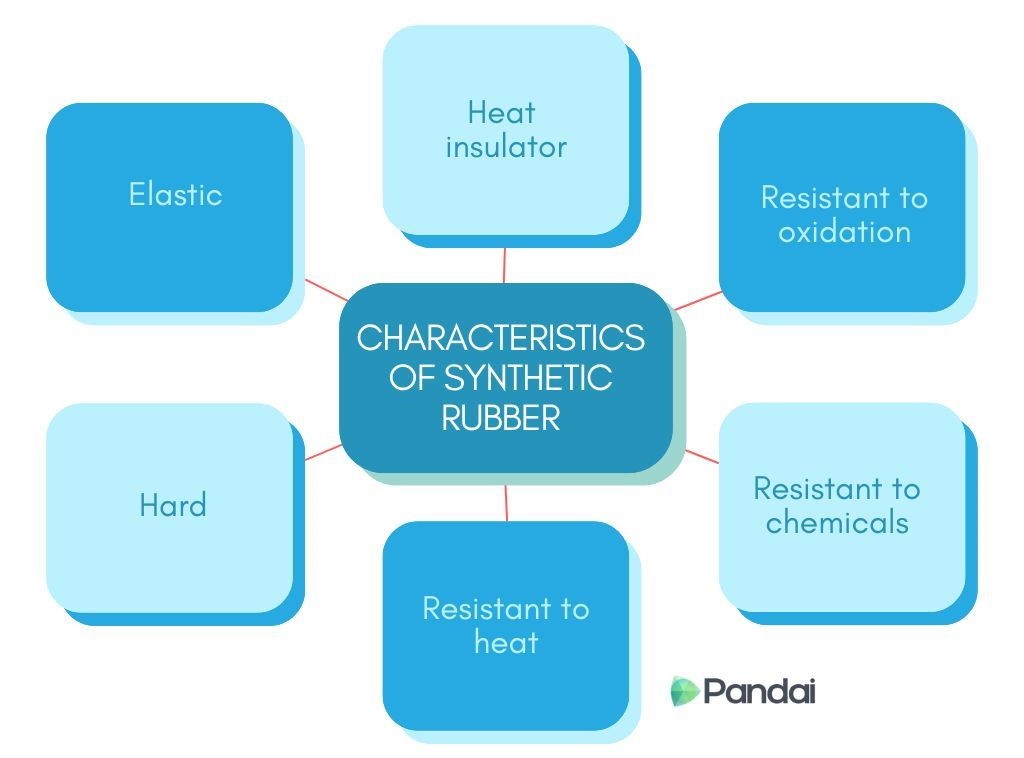| |
|
|
| |
| Introduction to Synthetic Rubber |
- Most synthetic rubber is produced as by-products of petroleum.
- Examples of synthetic rubber is neoprene, styrene-butadiene rubber (SBR) and silicone rubber.
|
|
| |
| Definition of Synthetic Rubber |
| A synthetic polymer that is elastic in nature or elastomer polymer. |
|
| |
 |
| |
| Uses of Synthetic Rubber |
- With the unique characteristics found in synthetic rubber, various items can be manufactured.
- Having the advantage of mass production capacity, while not being reliant on the weather or diseases like rubber trees do, makes synthetic rubber the main choice for manufacturing industries.
- The use of synthetic rubber is as shown below:
| Synthetic Rubber |
Characteristics |
Uses |
| Neoprene (polychloroprene) |
High heat resistance, oxidation resistance and flame resistance. |
Conveyor belts, petrol rubber hoses and gloves. |
| Styrene-butadiene rubber (SBR) |
Abrasion resistance and high heat resistance. |
Tyres and shoe soles. |
| Silicone rubber |
High temperature resistance and inert. |
Medical implants, cooking utensils, automotive components and sealants. |
| Thiokol |
Oil and solvent resistance. |
Sealants. |
| Nitrile rubber |
Oil and solvent resistance. |
Gloves. |
|
|
| |
| Use of Rubber and Environment |
- Unsustainable use of rubber materials will lead to environmental pollution.
- Synthetic rubber, particularly, takes a very long time to decompose and makes disposal difficult.
- Vehicle tyres are among the products of synthetic rubber that need to be disposed of in large quantities.
- Natural rubber, on the other hand, takes a short time to decompose biologically.
- Nevertheless, the use of natural rubber is limited due to the natural properties of natural rubber that is less resistant to heat and chemical solvents.
|
|
| |